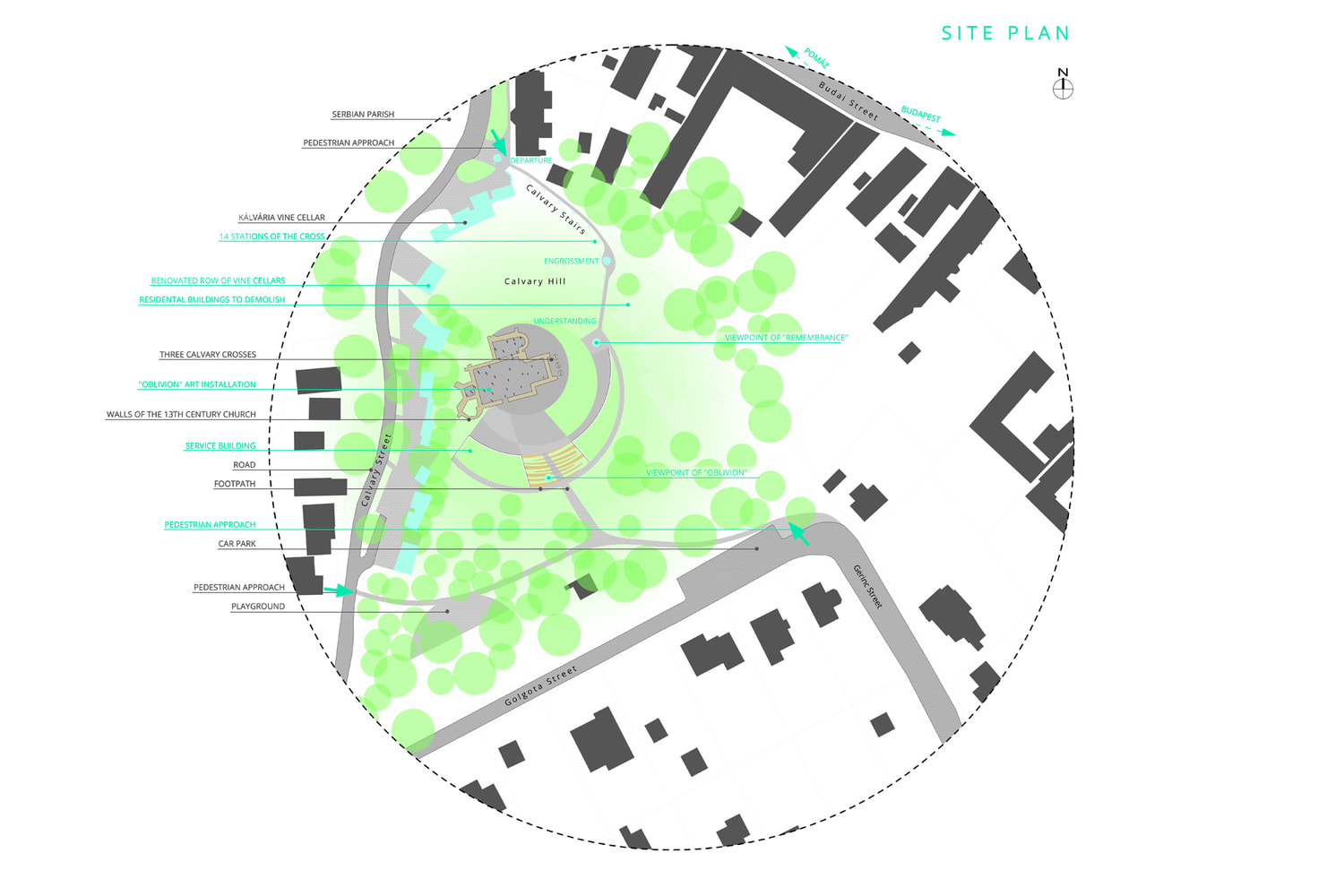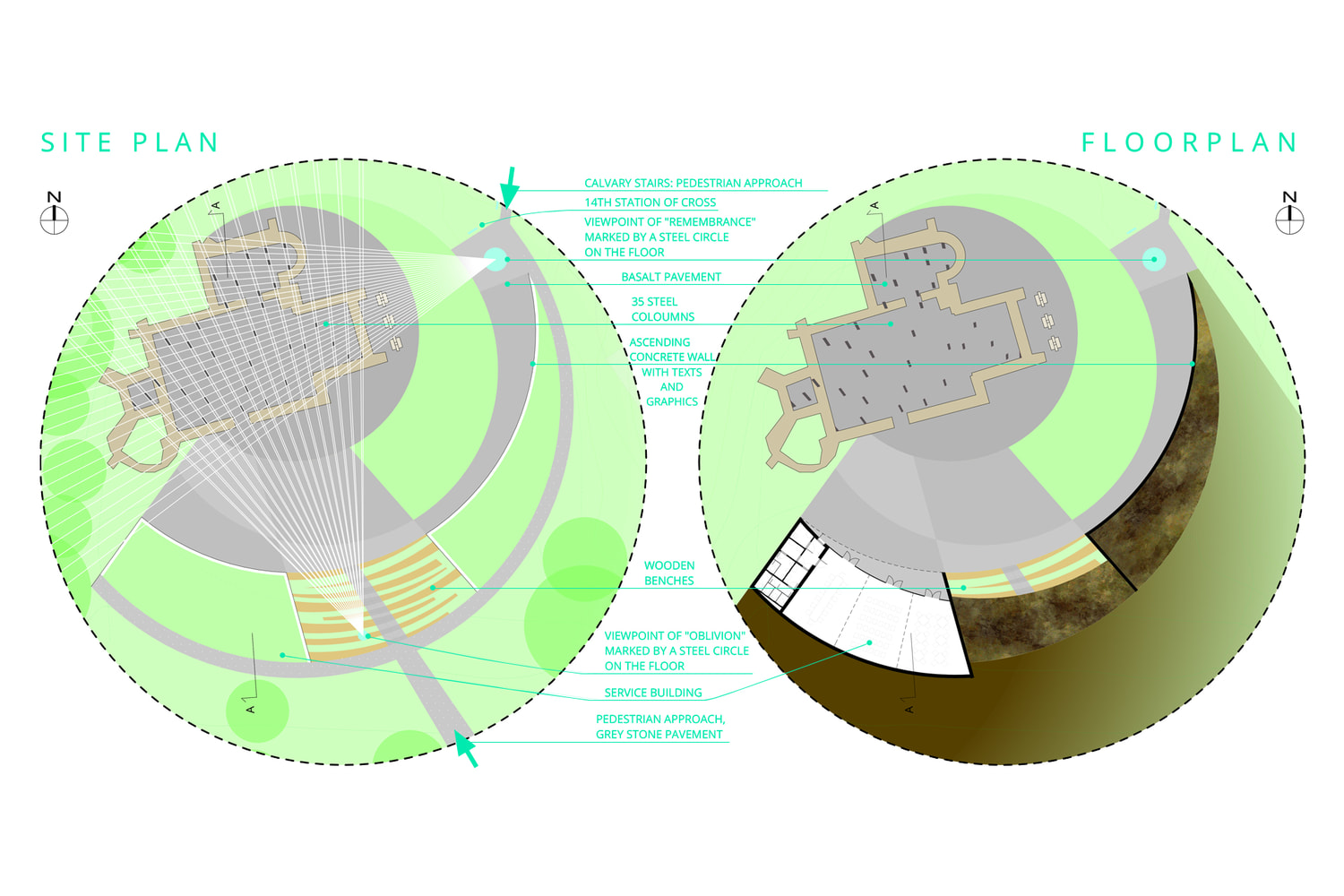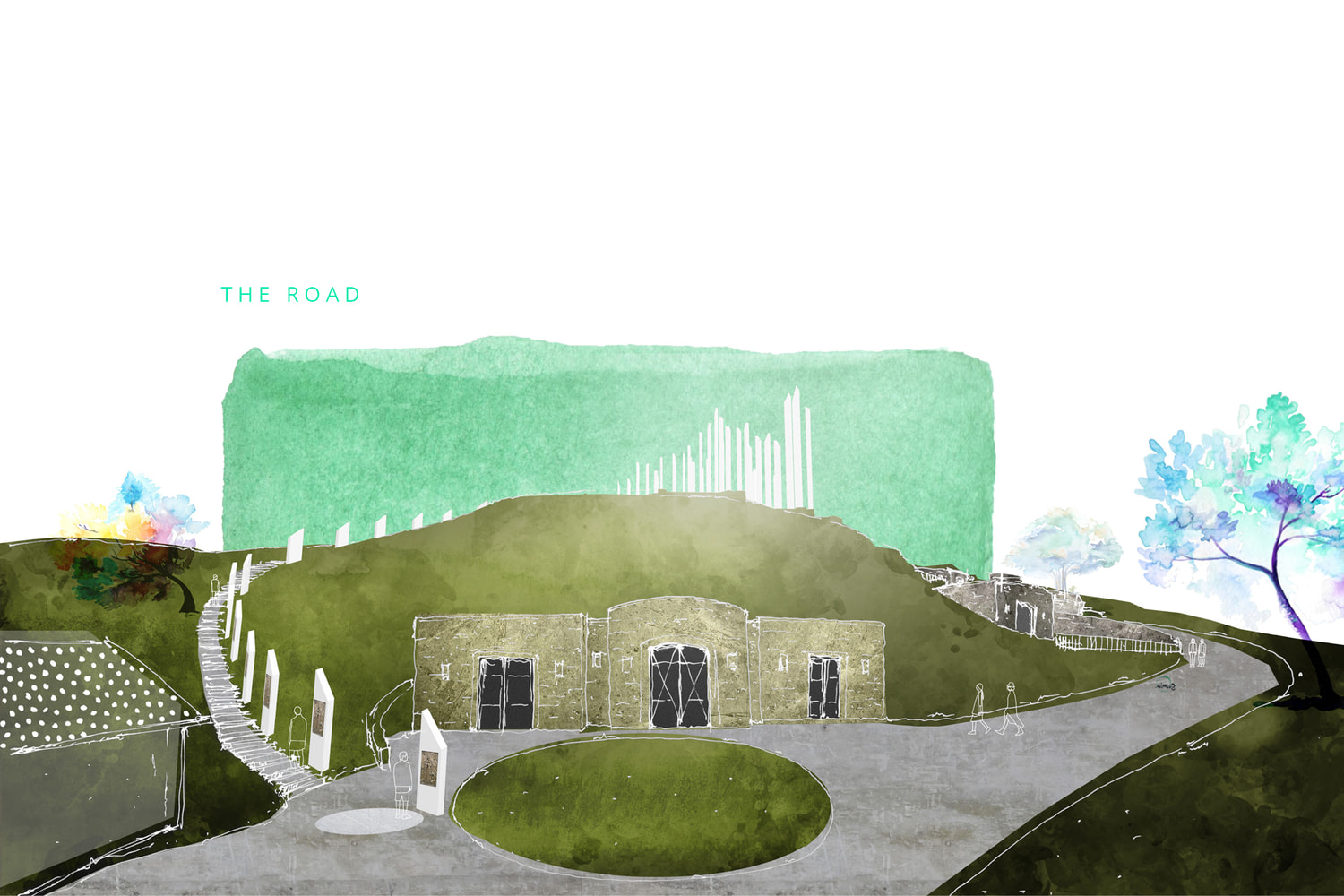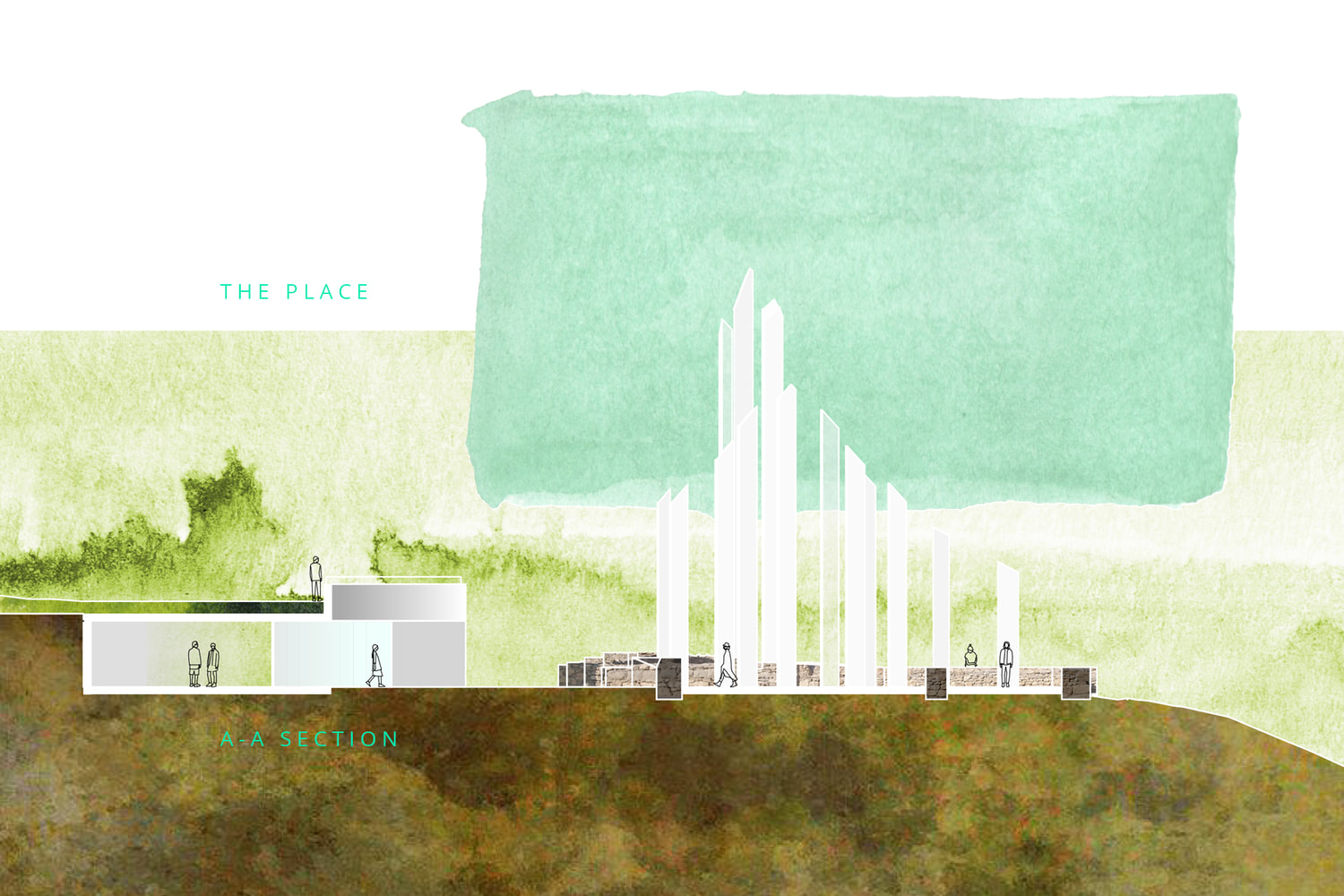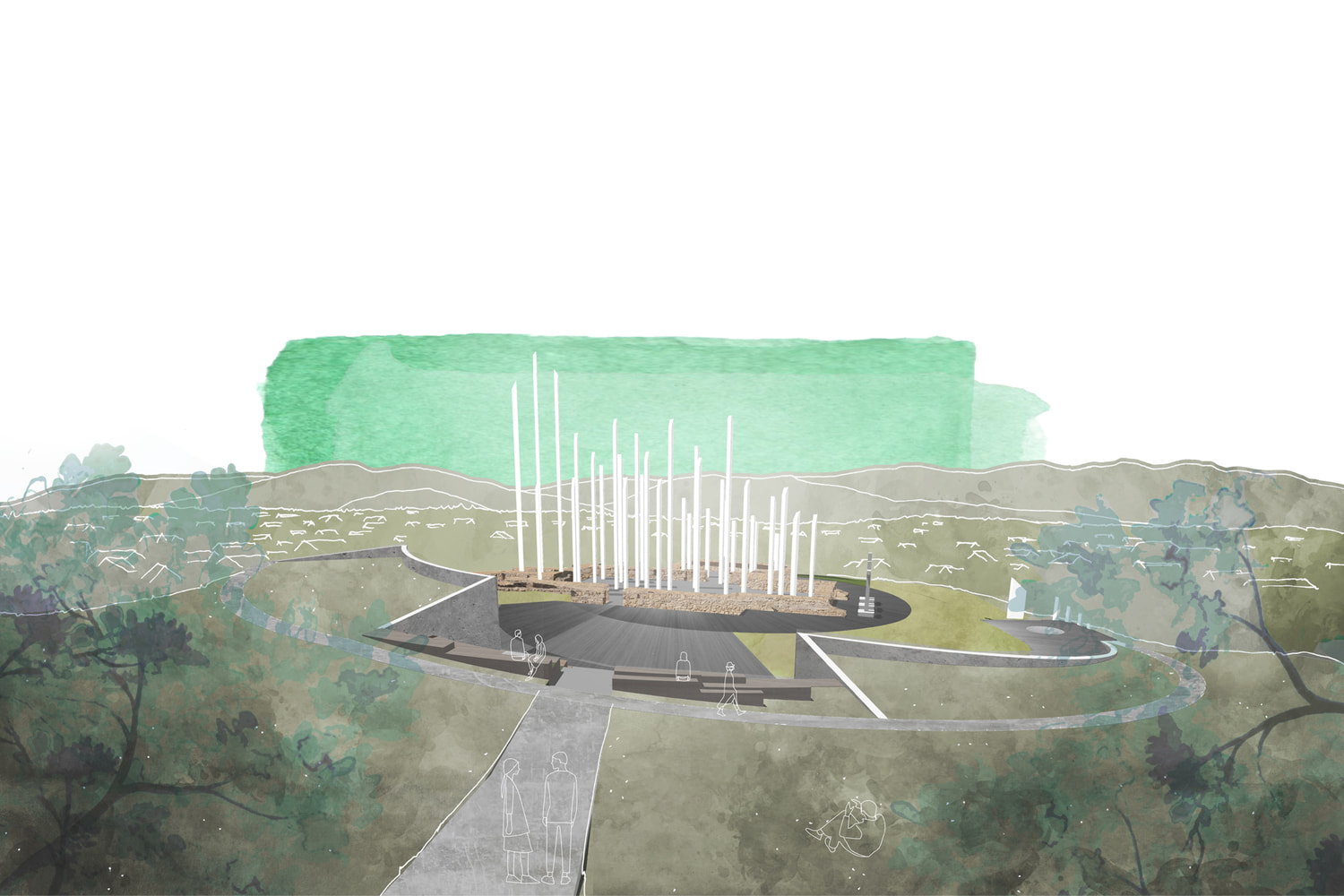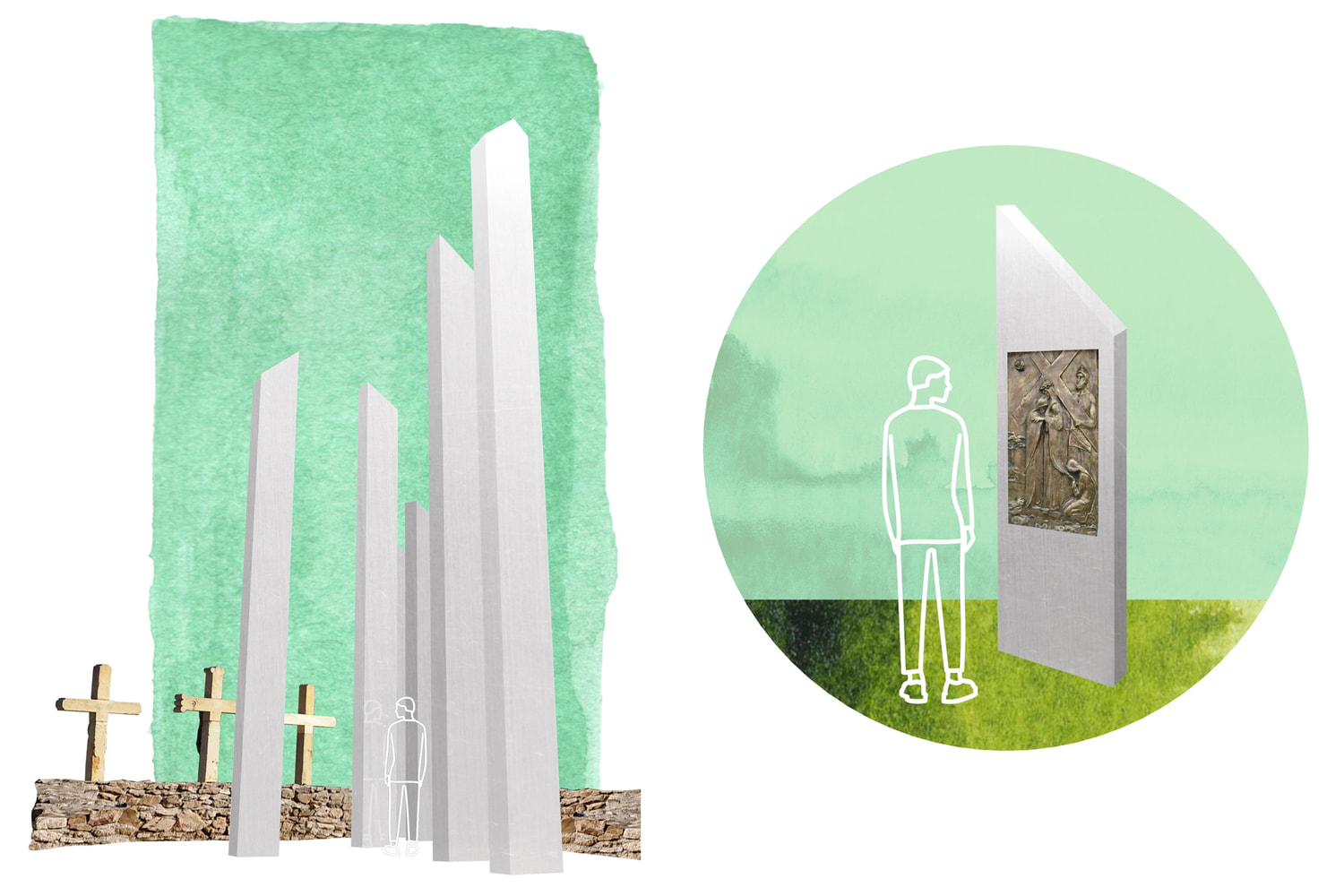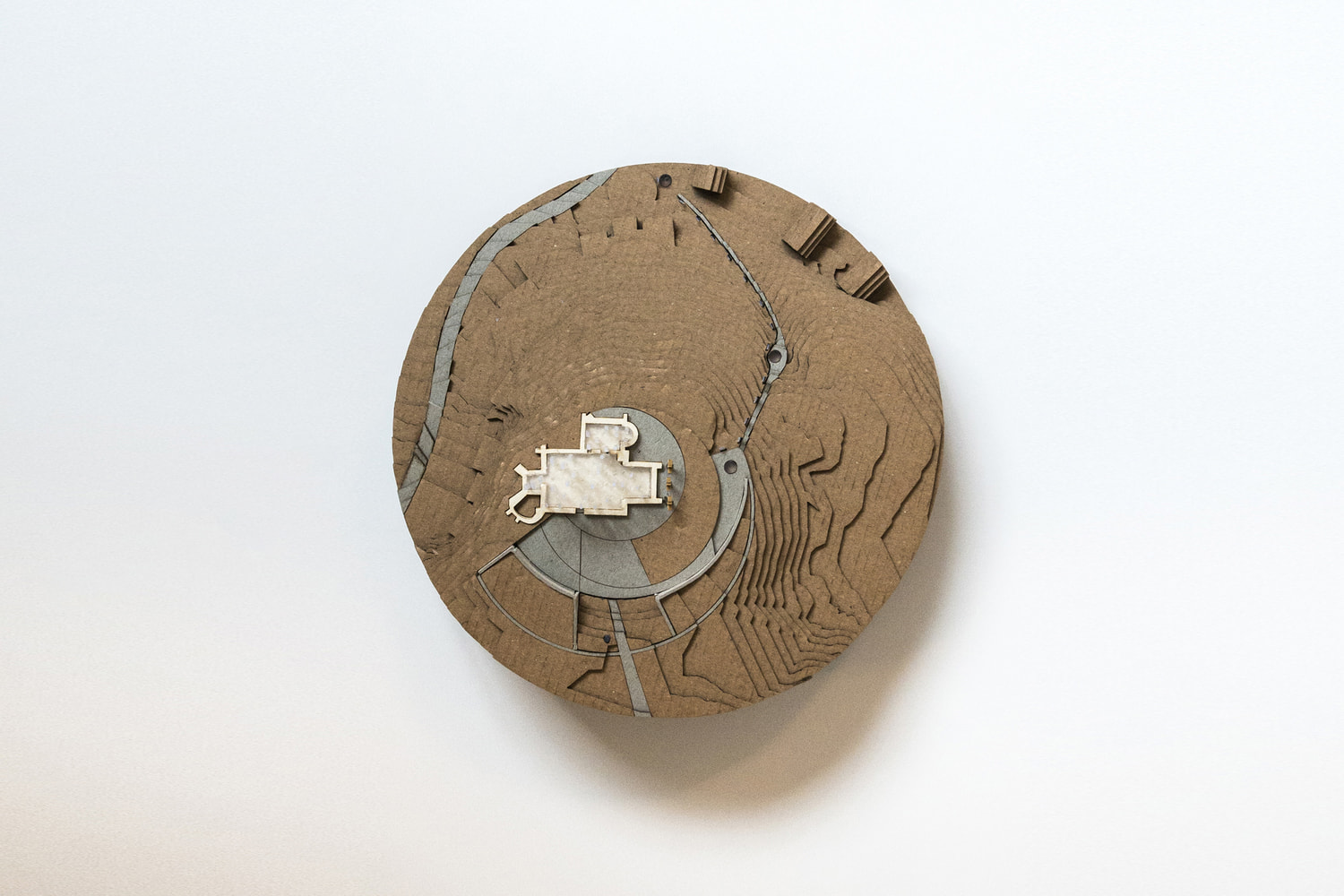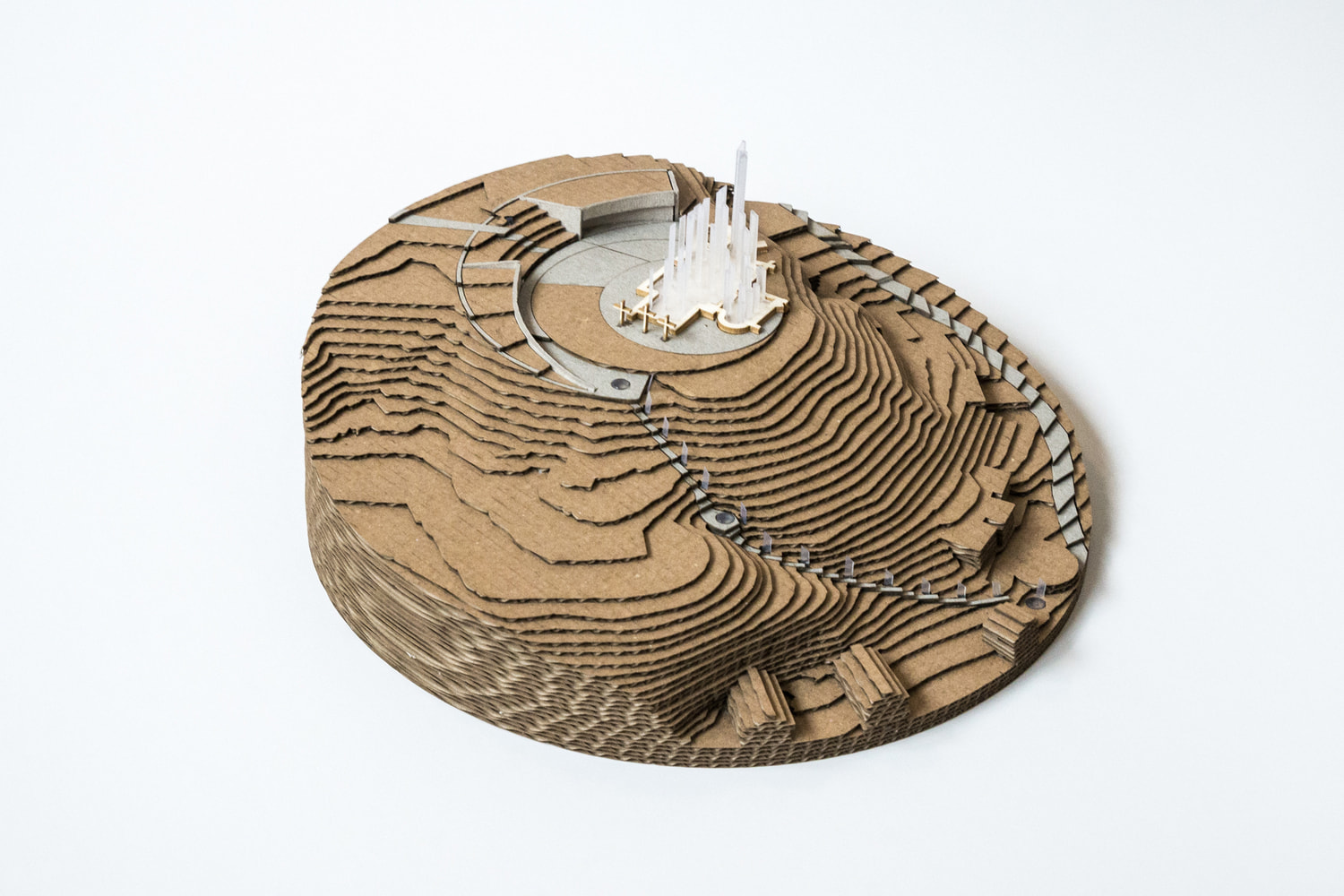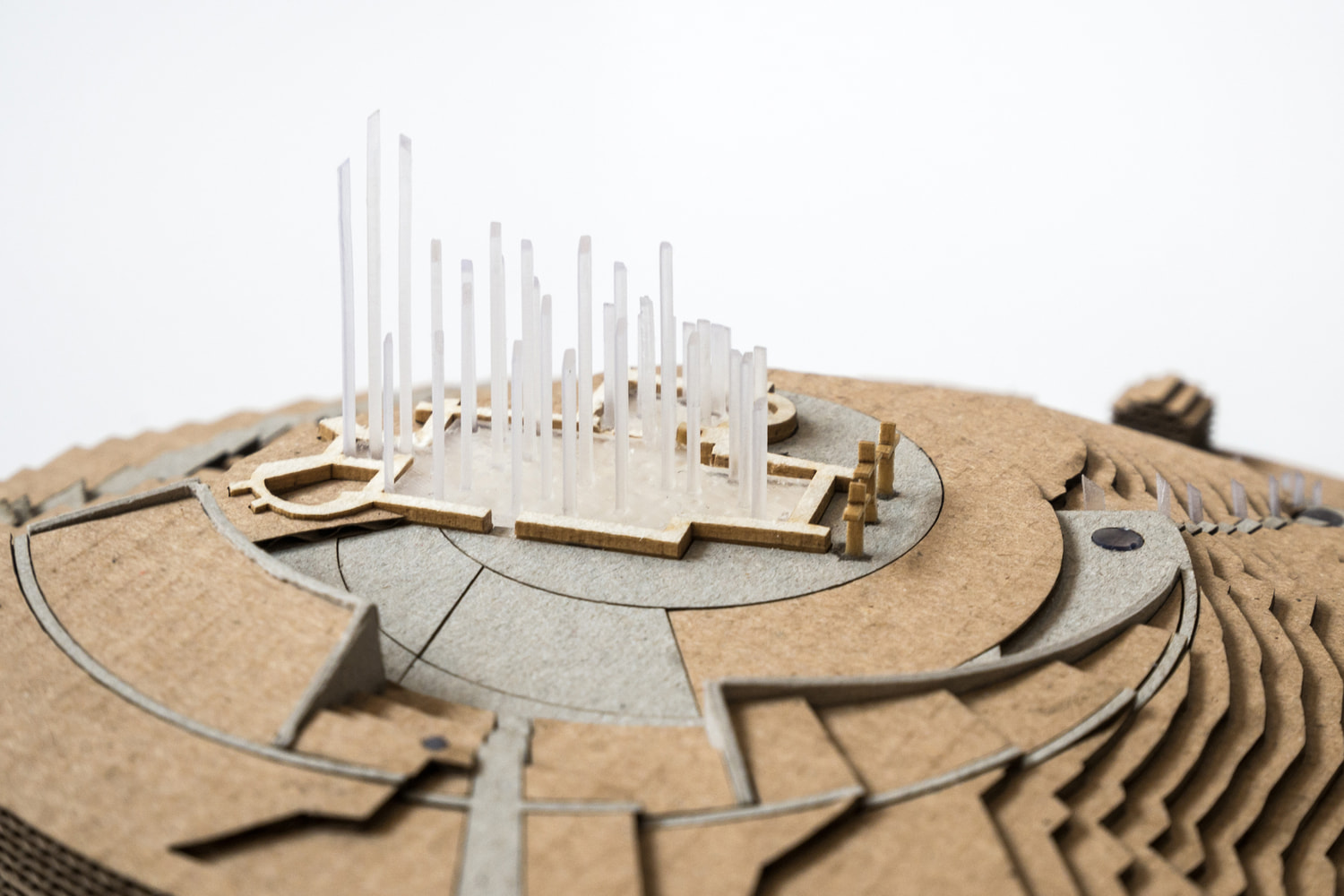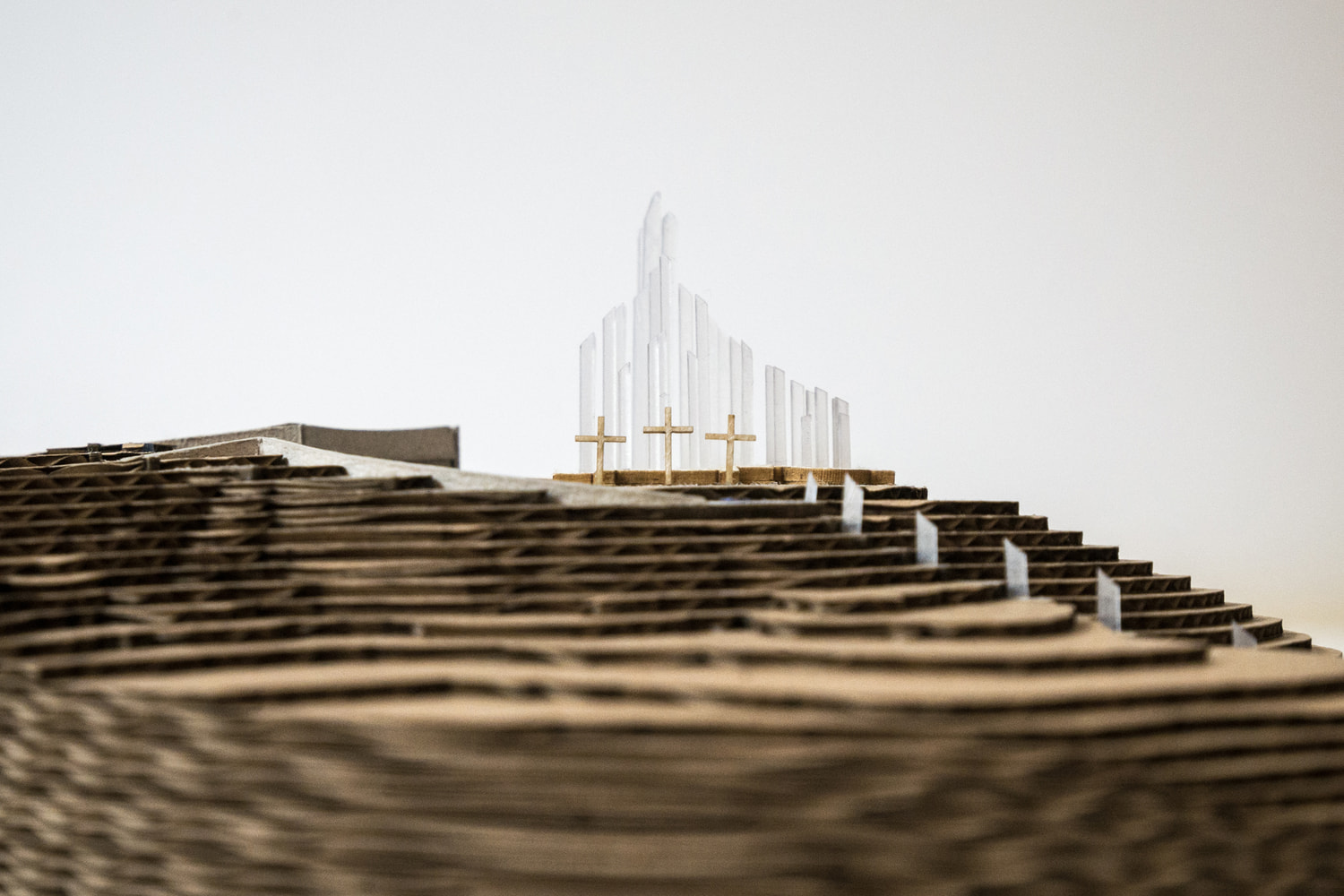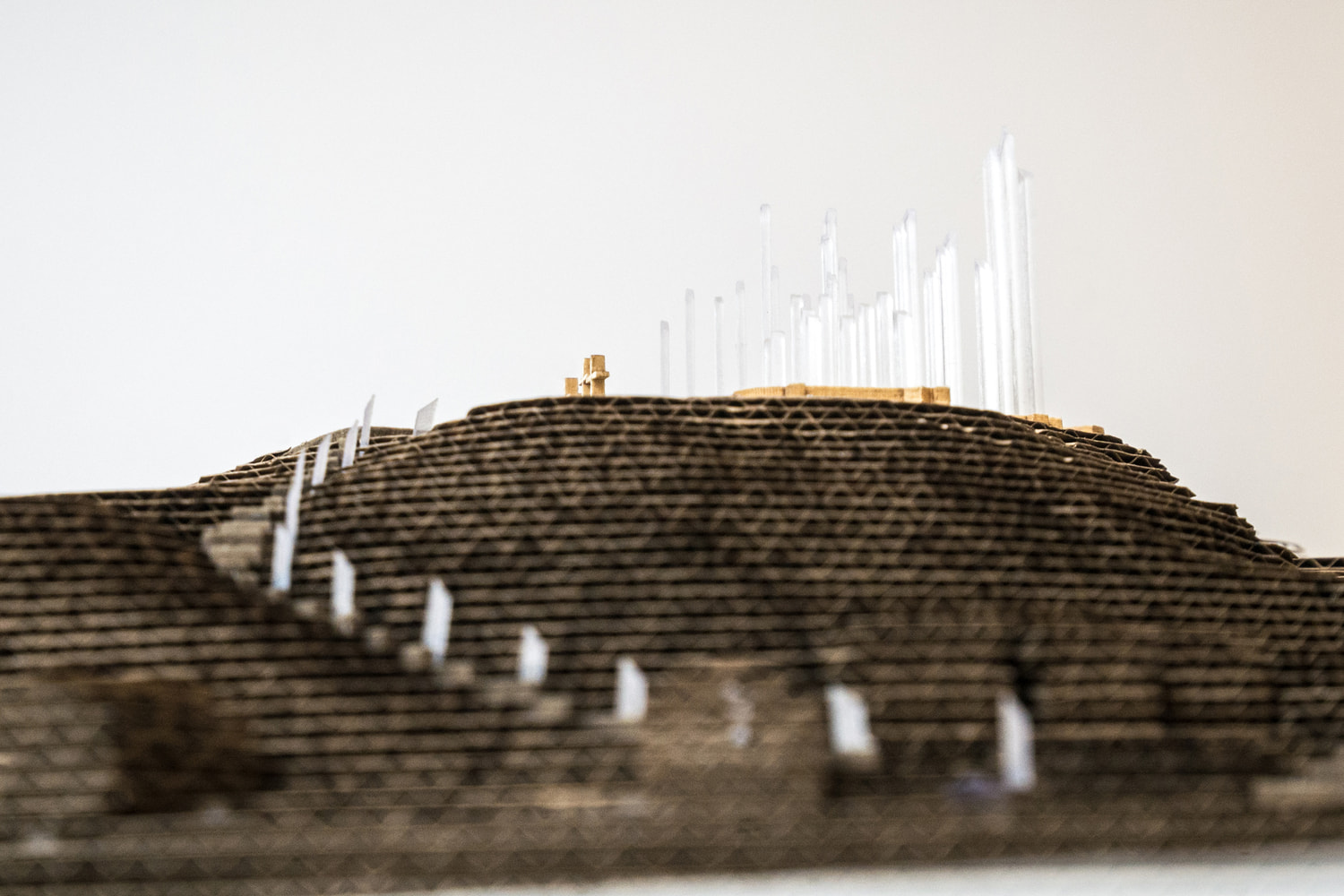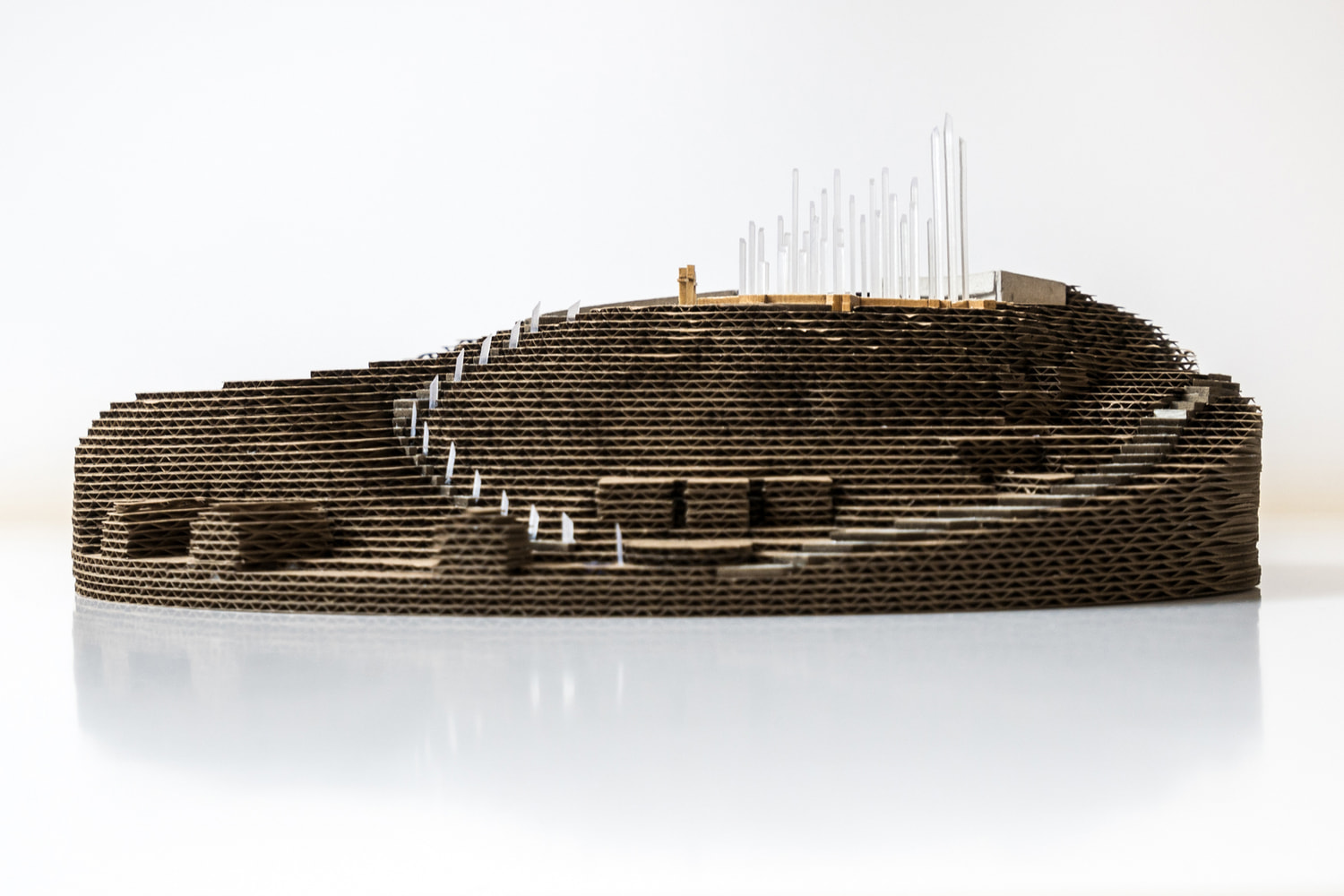The core of Budakalász – architectural competition
„slowly and slowly everything will sink into oblivion”
forget, /fəˈɡet/ verb 1) Missing something from the memory. 2) Losing a certain skill.
oblivion, /əˈblɪv.i.ən/ noun 1) Fault of memory whan one does not remember what happened. 2) The state of being completely forgotten. Slowly and slowly everything will sink into oblivion.
(Gergely Czuczor and János Fogarasi: Dictionary of the Hungarian language, 1862)
The Northern foothills of the Berdó hill is called Kálvária Hill. This is where archeologists found the remains of an Árpád-era church in 2011. What they unearthed was the history, the sacred core of Budakalász emerging from oblivion. The church took its final shape in the 13th century before it was badly damaged at the beginning of the Turkish era. Although the resettled residents and the Serbs worked hard to renovate it, the damaged church – which was one day the heart of the town’s life – turned into a ruin after a few generati…
The core of Budakalász – architectural competition
„slowly and slowly everything will sink into oblivion”
forget, /fəˈɡet/ verb 1) Missing something from the memory. 2) Losing a certain skill.
oblivion, /əˈblɪv.i.ən/ noun 1) Fault of memory whan one does not remember what happened. 2) The state of being completely forgotten. Slowly and slowly everything will sink into oblivion.
(Gergely Czuczor and János Fogarasi: Dictionary of the Hungarian language, 1862)
The Northern foothills of the Berdó hill is called Kálvária Hill. This is where archeologists found the remains of an Árpád-era church in 2011. What they unearthed was the history, the sacred core of Budakalász emerging from oblivion. The church took its final shape in the 13th century before it was badly damaged at the beginning of the Turkish era. Although the resettled residents and the Serbs worked hard to renovate it, the damaged church – which was one day the heart of the town’s life – turned into a ruin after a few generations. The stones of the church were used as building material in the nearby houses, and as centuries passed, even the memory of the former sacred core faded from people’s minds.
How can it happen, that a church where our grandparents went is completely unknown for our grandchildren? How can the sacred heart of a town disappear from the collective memory completely? It is especially interesting to think about it in the internet era, when it is seemingly impossible for anything to be forgotten, even if we would prefer it that way. These are the questions that we contemplate while sitting above the ruins, listening to the humming noise of the town, looking at the silhouette of the Pilis-, Visegrádi- and Naszály hills.
How can we evoke a church without building it again?
„therefore rememberance is to act”
memory, /ˈmem.ər.i/ noun 1) Spiritual talent, which evokes objects that have been noticed before, removes them from the past and protects them from forgetfulness; otherwise remembrance. 2) Sign, object that reminds one of something.
remember, /rɪˈmem.bər/ verb The talent of the human soul, by which it grasps, keeps and evokes the observed objects.
rememberance, /rɪˈmem.brəns/ noun The function of the memory, by which it recalls objects, as they were long ago.
Therefore remembrance is to act, and it is different from memory.
(Gergely Czuczor and János Fogarasi: Dictionary of the Hungarian language, 1862)
The former church is evoked by the 35 shiny steel pillars that each represent a thin segment of its mass. People can experience the former building by looking at it from a distance, walking amongst the pillars, viewing it from the hill or enjoying it as a part of the panorama.
The appearance of the installation is ever changing as the viewer is moving around it. It inspires us to keep moving, as the sculpture is moving along with us. There are two remarkable viewpoints though, where it is worth to linger for a while: one of them is ’oblivion’ – where you can only see 17 thin pillars of the building and the view of the surrounding hills can be enjoyed to the full. The other viewpoint is ’rememberance’ – right when you get to the top of the Kálvária stairs, the 27 visible pillars close in to create the silhouette of the church while blocking out the view behind it.
„the elements of the concept”
I. THE PATH
1.Restoring the cellar row
Viticulture and winemaking is an ancient tradition in Budakalász, which is celebrated every year with the Harvest parade. But as the century old cellars are deteriorating, this tradition is fading out slowly. The Kálvária street is really a magical street of the town, where the initiative to restore the old cellars is worth continuing. We propose to turn this street into a „wine street” and use it as the main pedestrian approach route to the church ruins instead of taking care of the messy hillside houses.
2. The Stations of the Kálvária
Townfolk has been dreaming of setting up the 14 Stations on the steps leading up to Kálvária. The stations are also shiny steel sheets with bronze reliefs made by a sculptor. Starting from the Kálvária Cellar we walk up the stairs to the church ruins, deepening our thoughts as we pass by the stations one by one, and as we get to the 14th station the church silhouette comes together and the church-sculpture shows itself. The well composed route, the movement and time all become important elements of the space and the experience.
3. Getting around on the top of the hill
Our walk is not over as we arrive to the stone crosses, we continue our route along the slowly ascending wall as we approach the church ruins. If the visitors arrives by car via Golgota street, they can park their car, and then walk to the church from there. The paved path can be used by visitors arriving with a wheelchair or a baby carriage. This is also the service route for the catering.
II. THE PLACE
Why is it a special experience to be here? Why did the inhabitants of the past centuries – Hungarians, Swabians, Serbs, Bulgarians – choose this place as a core of Budakalász?
1.The church ruin becomes an architectural mark
The installation of 35 steel pillars evoking the shape of the Árpád-era church can be seen from the town. It helps to envision how the Kálvária hill looked liked when the church was standing, and creates a sacred atmosphere around this cultic public space. It doesn’t reconstruct the church itself, and it doesn’t block out the view, but walking amongst the pillars we come to understand what stood here before and why exactly here it stood. We can touch the steel pillars, and their shiny surface reflect their surroundings, as if blending in or melting into the landscape.
2. The view
The most important value of this place today is probably the amazing view of the hills surrounding the southern gate of Dunakanyar. This view can be admired from the benches curving around the focal point and the slopes behind the church. The cut in staircase marks the radius as points toward the centre. As many as 180 people can be seated in this area, or it can be enjoyed in solitude, as this is the viewpoint of „oblivion”. In case of an event these benches serve as a theatron with the church and the hills as a backdrop.
3. Service building and paved areas
A geometric element constructed from arcs and rays that encompasses the church as it slowly emerges from the ground. When approaching from the Kálvária stairs, we see an upward sloping curved wall with information about the place engraved in its concrete wall. It forms a tribune in the middle, and then it becomes a building hidden underground. This cellar like facade can only be seen from Kálvária street and nowhere else in the town. The building can not be seen from the hilltop, only the bordering paved path and the curve of the railing shows where the edges of the built structure could be. The green roofed building has 120 sqm dividable event hall, a 30 sqm lavatory area and a 20 sqm covered patio to serve the events that are held here along with the other paved areas.
4. Nature
When we are on the top of the hill, we can enjoy being in a natural environment while also being in the centre of the town. The scents, the sounds and the view of the distant hills all add to the overall picture. Turning the space into a possible event location does not mean that we can’t walk up here anytime to admire the landscape, listen to the sounds of the town and the song of the birds – just like before.
Immersing ourselves in our thoughts and just be – like we always do.
Architectural competition: Nóra Pajer, Noémi Soltész / 2018
Team: Norbert Juhász
Location: Budakalász, Calvary Hill
Size: 6500 m2



